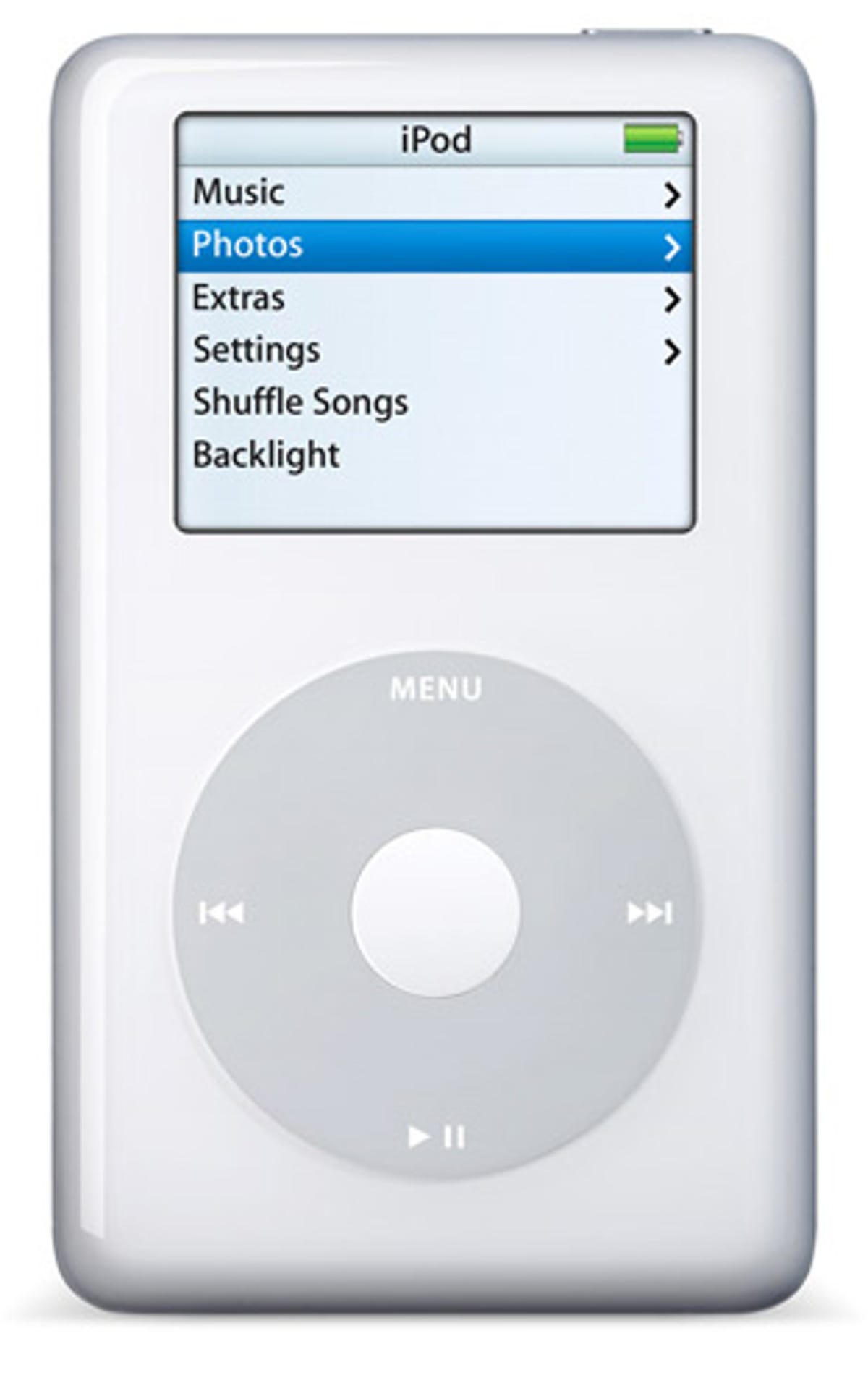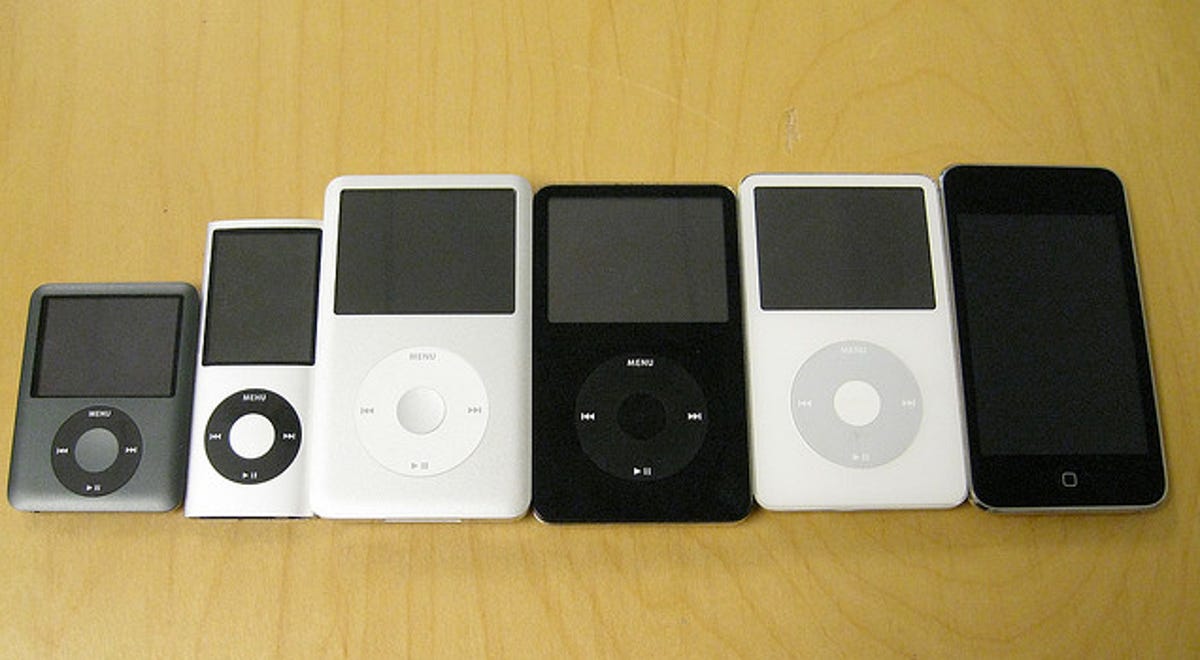
Apple
The iPad is to tablets what the iPod was to MP3 players. I think that’s safe to say now, right? I mean, here we are again with Apple churning out a runaway hit that defies logical, practical buying habits and ranks up there with cultural phenomena like Beanie Babies and Snuggies.
Still, when I hear people compare the iPad’s success with the iPod’s, something doesn’t sit quite right with me. As someone who lived through the iPod wars and spent an unhealthy amount of time analyzing them, I feel obligated to drill past the superficial similarities of the iPod and iPad eras, and really see if they’re as similar as we think.
So let’s take a trip down memory lane, look at the iPod wars for what they really were, and see if history is really repeating itself.
The windup
As many of you know, Apple wasn’t the first company to make an MP3 player or a tablet. By the time the iPod came on the scene in 2001, products like the MPman had already been on the market for three years. The market was small, though, and only early adopters and die-hard music nuts were scooping them up. To Apple’s credit, it was the first large company to really step into the MP3 player space (far ahead of its biggest competitor at the time, Microsoft).
When the iPod arrived, it didn’t offer the most features or the best price, but it did include what was then an enviable 5GB capacity. It also featured a design that was so unlike anything else out there (including portable CD players, which still defined the era), that it felt like some precious gift from the future.
In the case of the iPad, everyone from Palm, to Microsoft, and even Apple itself, had taken stabs at tablets and pen-operated handhelds for decades. Concepts for tablet computers very similar to the iPad predate the rise of personal computers.


Apple
And while Apple didn’t have the early-bird advantage when it came to launching the iPad, this time around it did have the best price and a product that would take competitors years to catch up to in terms of both software and design. Also, though Apple had to take a big step out of its Mac-making comfort zone to make the first iPod, the iPad launched with nearly 10 years of portable electronics expertise under Apple’s belt.
I won’t say that Apple completely deserves the success it is enjoying with the iPad (90 percent market share is obscene). I do think that today’s tablet competitors sometimes fail to appreciate how much 10 years of innovating with the iPod is what makes the iPad so enduring. To quote Carl Sagan, “If you wish to make an apple pie from scratch, you must first invent the universe.” By inventing iOS, iTunes, and the iPod, and creating the world’s most popular mobile app store, Apple essentially took 10 years to create a universe before baking the iPad.
They don’t have to like it, but if competitors can’t appreciate the scale of the effort that went into the iPad (by way of the iPod), they’ll never create its successor.
The pitch


Apple
To give some perspective, it took Apple two years to sell a million iPods. The first iPad reached that same sales number in one month. We tend to forget that the iPod wasn’t really a hot seller early on. It was a status symbol, sure, but it took years before it became a household staple.
The iPad hit the ground running. Part of this success was because Apple’s success with iOS devices like the iPhone and iPod Touch had already paved inroads for users’ expectations. They already knew what they were getting, how it worked, and why they wanted it. It’s also useful to remember that Apple is a very different company than it was in 2001. When the iPod launched, Apple had no stores and no iTunes. The only iBooks they were selling were cheap, candy-colored laptops.
Another interesting distinction between today’s iPad and the early days of the iPod is how Apple marketed these devices. With the exception of a few corny games and an ability to sync notes and contacts, all the first few generations of iPod could do is play music. Apple’s tag line was “1,000 songs in your pocket.” When it launched, the dominant music format in the world was CD. For people with bookcases of CDs clogging their living room, the iPod offered a very practical solution for condensing that collection and clearing some room. It took years for advancements such as photo and video playback to creep into the iPod, and when they did, they were still secondary to music.
By comparison, the iPad is sold under the same “There’s an app for that” umbrella as the iPhone and iPod Touch. Its promise is endless utility, made possible through an integrated, credit card-connected App Store.
By Apple’s own admission, the iPad is an in-between device, overlapping the areas of conventional computers and smartphones. From a practical perspective, the iPad offers few advantages over either platform aside from form and size.
In short, when Apple pitched the iPod to consumers, it was a single-purpose device with a relatively high price. The iPad was a complete reversal of this formula. Its base price was (and remains) one of the best in the industry, and its features promise to do everything except take out the garbage. One of the only pieces of common ground is their promise to entertain.


Donald Bell/CNET
Competitively, I’ve seen devices try to outdo Apple in both extremes–either narrowing down to a specific focus (like the Nook Color) or broadening utility by adding features (Motorola Xoom). Neither approach on its own will lead to an inherently more entertaining product, though, and I wish more manufacturers would focus on delighting consumers than paying engineers to beef up their spec sheets.
There are companies that could potentially outdo Apple when it comes to the fun stuff. Microsoft, Sony, and Amazon all have the content, leverage, and connections to bring compelling media and games to a tablet. Then again, if Microsoft and Sony couldn’t make a dent during the iPod era, how likely is it that they’ll take up swords against its bigger, more sophisticated sibling?
The competition


Motorola
The iPad, like the iPod, is both a blessing and a curse for the competition. On the one hand, both of these products turned a struggling tech niche into a multimillion-dollar industry, opening the gates for competitors big and small to get a piece of the action. Unfortunately, in the case of both markets, it seems that optimism is in greater supply than actual opportunities.
For the iPod, serious competitors included Creative, SanDisk, Microsoft, Sony, and Toshiba. Each manufacturer made its own brand of iPod-killers, built from the ground up with their own hardware and software.
On paper, making a better MP3 player than the iPod wasn’t very hard. The iPod was expensive, lacked features as basic an FM radio, supported only a handful of music formats, came in only one color (initially), lacked great sound, and iTunes music purchases were locked down with a proprietary DRM that would only work with Apple products and software.


SanDisk
With all these flaws, competitors had a field day criticizing the iPod and propping up their affordable, full-featured alternatives. Every now and then, a few would get traction. The Creative Zen Vision, for example, introduced video playback ahead of the iPod, but quickly took a back seat when Apple introduced a slimmer, video-capable iPod shortly after.
Bewildered by their inability to woo customers away from Apple’s pricey, restrictive iPod, some competitors adopted more-psychological tactics. SanDisk started its “iDon’t” campaign, characterizing iPod owners as sheep and monkeys. Microsoft’s “Welcome to the Social” Zune campaigns painted the iPod as an unhip, antisocial experience and aligned the Zune software with MTV’s URGE subscription music service. In both cases, attempts to topple Apple from its pedestal of coolness failed.
How the game was won


Donald Bell/CNET
Upon reflection, my biggest takeaway on the iPod era is that it wasn’t the tidy massacre everyone makes it out to be. It took years for this niche MP3 player to build popular momentum. After the iPod broke the MP3 player market into the mainstream, Apple fought aggressively year after year to play catch-up with competitors offering better screens, bigger capacity, smaller designs, and more features. After launching in 2001, I would argue that it wasn’t until 2005 that the iPod really eclipsed the competition with the launch of the iPod Nano, iPod Shuffle, and the fifth-generation iPod, later named the iPod Classic.
The iPad, on the other hand, hit the industry like a sucker punch. The majority of tablets that landed in its wake only served to prove that competitors were still too dizzy to understand what they were up against. Beyond its hardware, the iPad represents 10 years of Apple creating and refining popular mobile software and services. The hardware is important, but its the experience behind the glass that competitors are having such a hard time matching. Only a few companies have that kind experience to bear, and two of the best (Microsoft and Sony) are still sitting on the sidelines.
The iPod, by comparison, was a bluff. It was Apple working outside of its comfort zone and betting on a slick design to break the MP3 player mainstream. It worked because it resonated with music fans, the design was iconic, and the advent of iTunes (in spite of its DRM drawbacks) brought digital downloads within reach of even the most technophobic consumers.
In hindsight, it seems hard to believe that no one was able to prevent something as simple as the iPod from running away with the MP3 player market. It’s going to be hard to explain to my kid why everyone chose to buy iPods to play their music in spite of dozens of measurably better competitors (at least, early on).
If I’m asked to explain why the iPad is so successful, then the answer is easy: Apple spent a long time practicing, and it shows.
If a tablet is going to knock Apple out of first place, the iPod has proved that a better spec sheet, lower price (though it helps), or a cooler marketing campaign aren’t enough. There’s no quick fix, and if you’re not willing to put in the work, at least try something risky. After all, that’s how we got the iPod.



